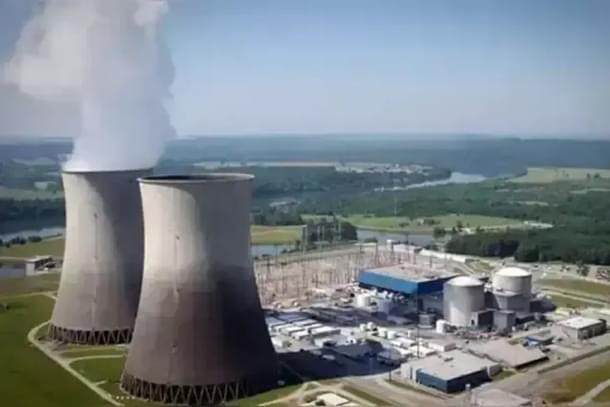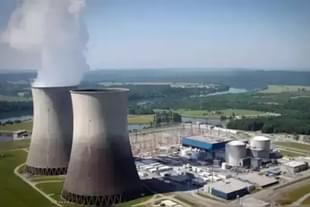Infrastructure
Gujarat: PM Modi Unveils Two Indigenously Built 700 MW Reactors At Kakrapar In Surat
Amit Mishra
Feb 23, 2024, 02:13 PM | Updated 02:13 PM IST
Save & read from anywhere!
Bookmark stories for easy access on any device or the Swarajya app.


Prime Minister Narendra Modi on Thursday dedicated to the nation two new pressurised heavy water reactors (PHWRs) at Kakrapar Atomic Power Station (KAPS) in Gujarat's Surat district.
Developed indigenously, the two reactors with a combined capacity of 1,400 MWs will produce about 10.4 billion units of clean electricity per year and benefit consumers in Gujarat, Maharashtra, Madhya Pradesh, Chhattisgarh, Goa, Dadra and Nagar Haveli, and Daman and Diu.
The two new reactors — unit 3 and unit 4 — are the first two in the series of 16 indigenous PHWRs of 700 MW each being set up in the country and equipped with state-of-the-art safety features that rival the best globally.
A PHWR uses natural uranium as fuel and heavy water as coolant and moderator.
After addressing a gathering at Navsari in south Gujarat, the Prime Minister reached Kakrapar village where the nuclear power plant is situated.

The Nuclear Power Corporation of India Limited (NPCIL), a public sector enterprise under the Department of Atomic Energy, has successfully designed, constructed and commissioned these reactors at a cost exceeding Rs 22,500 crore.
Notably, the supply of equipment and contract execution has been managed by Indian industries and companies, exemplifying the genuine essence of the Make in India initiative.
The Kakrapar Atomic Power Station (KAPS) has been operational since 1993, with two units generating 220 MW each. The new units 3 and 4 have been built adjacent to the existing ones.
The third unit of the Kakrapar Atomic Power Project (KAPS-3) reached full operational capacity on 31 August last year. Meanwhile, unit 4 (KAPS-4) achieved a significant milestone by achieving criticality (start of controlled fission chain reaction) for the first time on 17 December 2023, and is expected to reach full power soon.
Once both new units are up and running, the total power production capacity of the Kakrapar plant will rise to 1,840 MW.
NPCIL currently operates 23 reactors, totaling 7,480 MW in capacity. These consist of 19 PWHRs, two boiling water reactors (BWRs), and two pressurised water reactors (PWRs).
Furthermore, NPCIL is building nine more units (including KAPP-4), adding up to 7,500 MW in capacity. Additionally, 10 additional reactors, with a combined capacity of 7,000 MW, are in pre-project stages and expected to be finished by 2031-32.
The launch of the two units at Kakrapar marks a significant milestone in the commercial evolution of the domestically developed PWHR technology. The unit capacity of PHWRs has progressed from 220 MW to 540 MW and now to 700 MW with near to full indigenous content.





